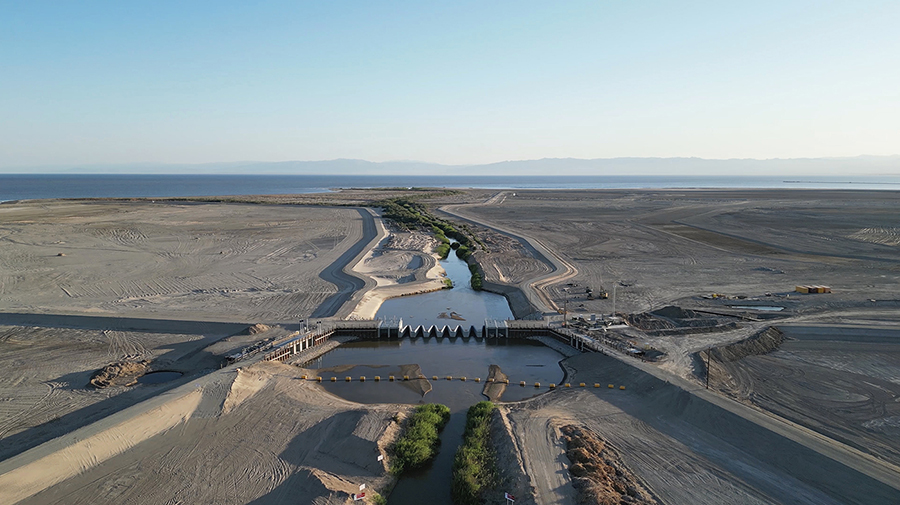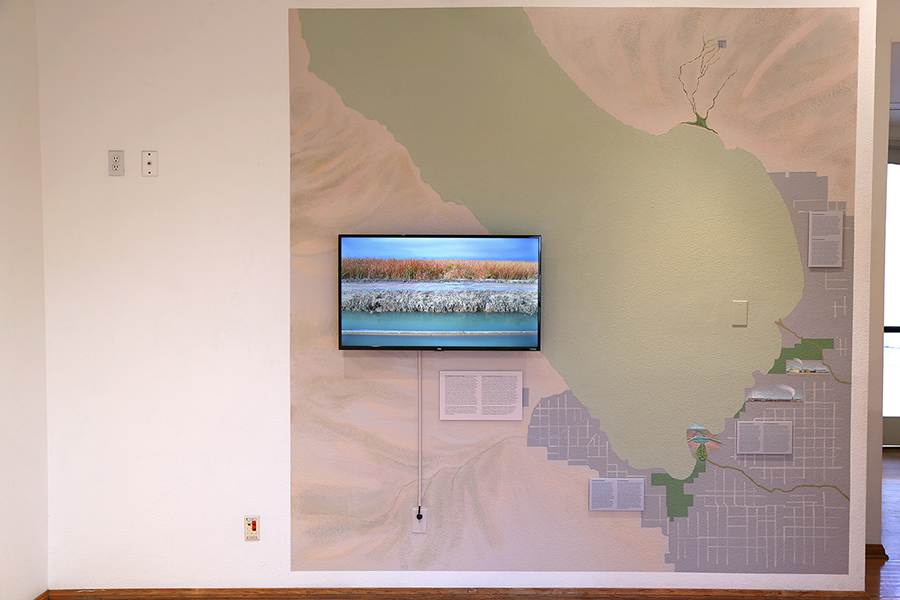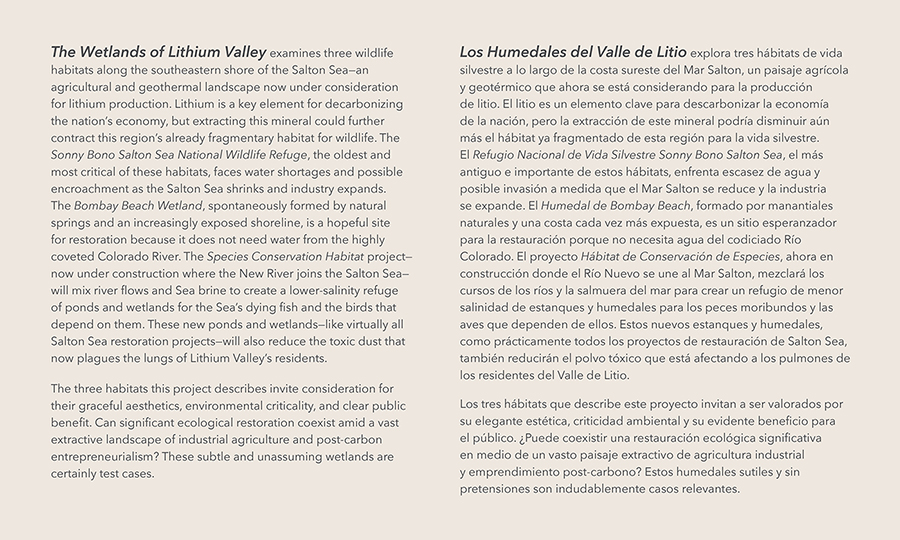The Wetlands of Lithium Valley examines three wildlife habitats along the southeastern shore of the Salton Sea—an agricultural and geothermal landscape now under consideration for lithium production. Lithium is a key element for decarbonizing the nation's economy, but extracting this mineral could further contract this region's already fragmentary habitat for wildlife. The Sonny Bono Salton Sea National Wildlife Refuge, the oldest and most critical of these habitats, faces water shortages and possible encroachment as the Salton Sea shrinks and industry expands. The Bombay Beach Wetland, spontaneously formed by natural springs and an increasingly exposed shoreline, is a hopeful site for restoration because it does not need water from the highly coveted Colorado River. The Species Conservation Habitat project—now under construction where the New River joins the Salton Sea—will mix river flows and Sea brine to create a lower-salinity refuge of ponds and wetlands for the Sea's dying fish and the birds that depend on them. These new ponds and wetlands—like virtually all Salton Sea restoration projects—will also reduce the toxic dust that Lithium Valley's residents must breathe. The three habitats this project describes invite consideration for their graceful aesthetics, environmental criticality, and clear public benefit. Can significant ecological restoration coexist amid a vast extractive landscape of industrial agriculture and post-carbon entrepreneurialism? These subtle and unassuming wetlands are certainly test cases.
Los Humedales del Valle de Litio explora tres hábitats de vida silvestre a lo largo de la costa sureste del Mar Salton, un paisaje agrícola y geotérmico que ahora se está considerando para la producción de litio. El litio es un elemento clave para descarbonizar la economía de la nación, pero la extracción de este mineral podría disminuir aún más el hábitat ya fragmentado de esta región para la vida silvestre. El Refugio Nacional de Vida Silvestre Sonny Bono Salton Sea, el más antiguo e importante de estos hábitats, enfrenta escasez de agua y posible invasión a medida que el Mar Salton se reduce y la industria se expande. El Humedal de Bombay Beach, formado por manantiales naturales y una costa cada vez más expuesta, es un sitio esperanzador para la restauración porque no necesita agua del codiciado Río Colorado. El proyecto Hábitat de Conservación de Especies, ahora en construcción donde el Río Nuevo se une al Mar Salton, mezclará los cursos de los ríos y la salmuera del mar para crear un refugio de menor salinidad de estanques y humedales para los peces moribundos y las aves que dependen de ellos. Estos nuevos estanques y humedales, como prácticamente todos los proyectos de restauración de Salton Sea, también reducirán el polvo tóxico que está afectando a los pulmones de los residentes del Valle de Litio. Los tres hábitats que describe este proyecto invitan a ser valorados por su elegante estética, criticidad ambiental y su evidente beneficio para el público. ¿Puede coexistir una restauración ecológica significativa en medio de un vasto paisaje extractivo de agricultura industrial y emprendimiento post-carbono? Estos humedales sutiles y sin pretensiones son indudablemente casos relevantes.
(Click to enlarge the images / Click para ampliar las imágenes)













